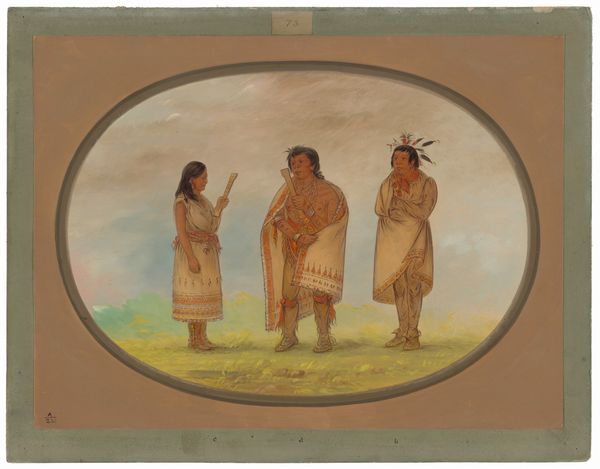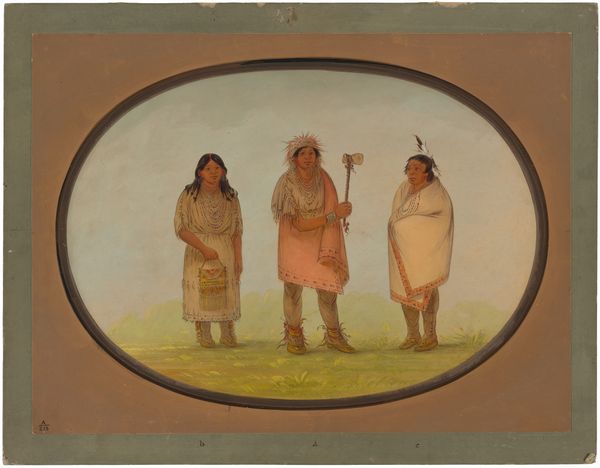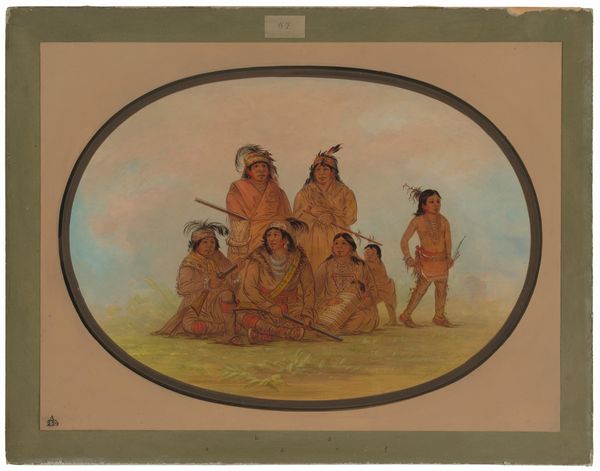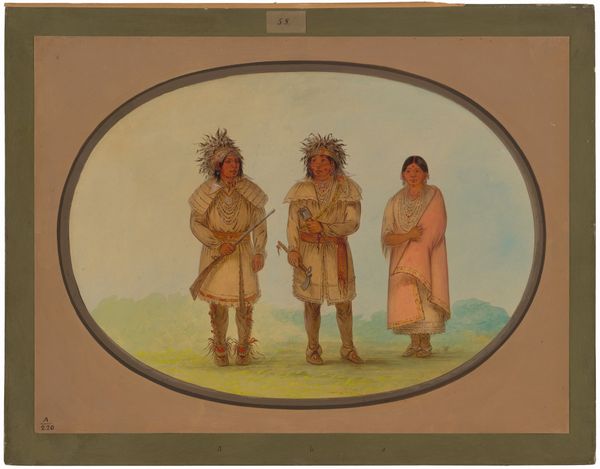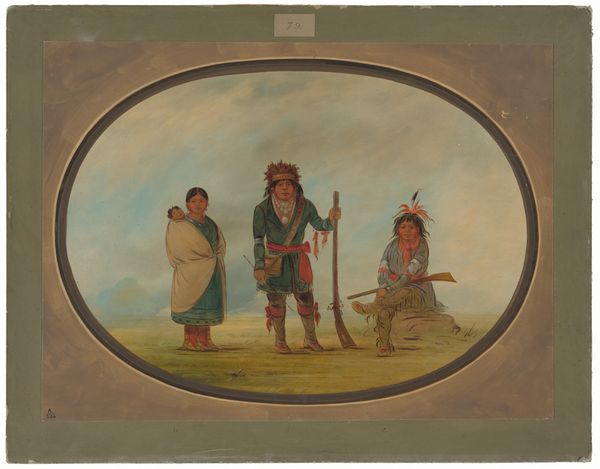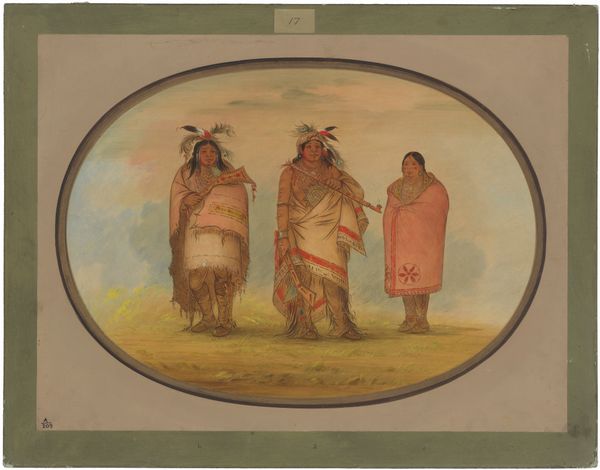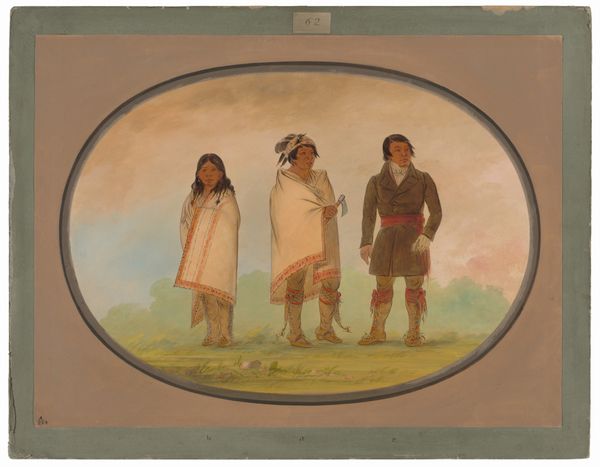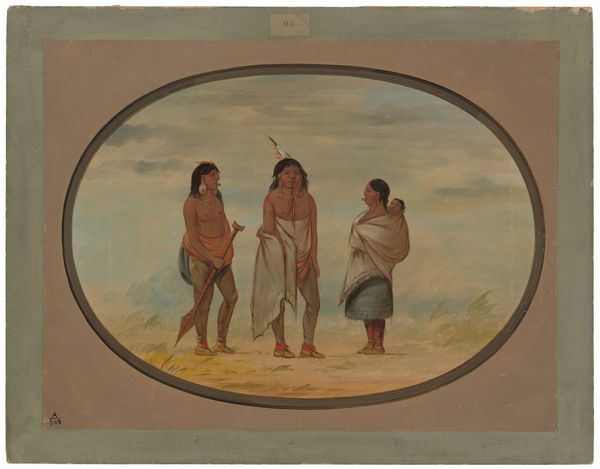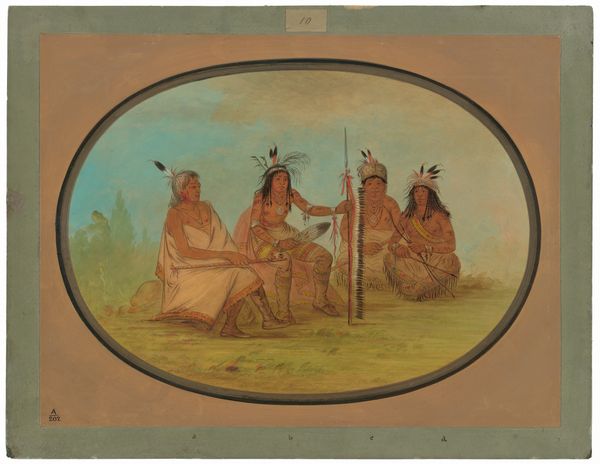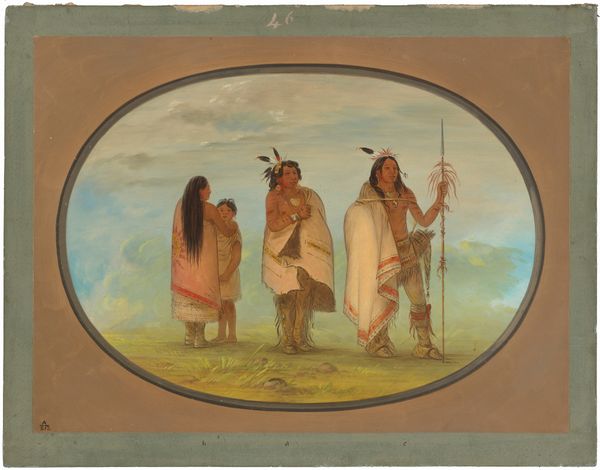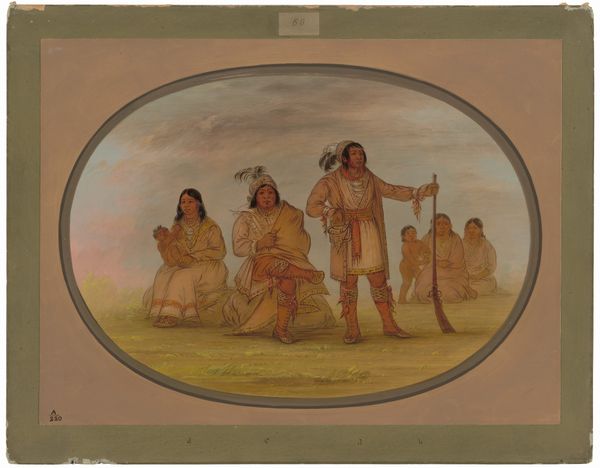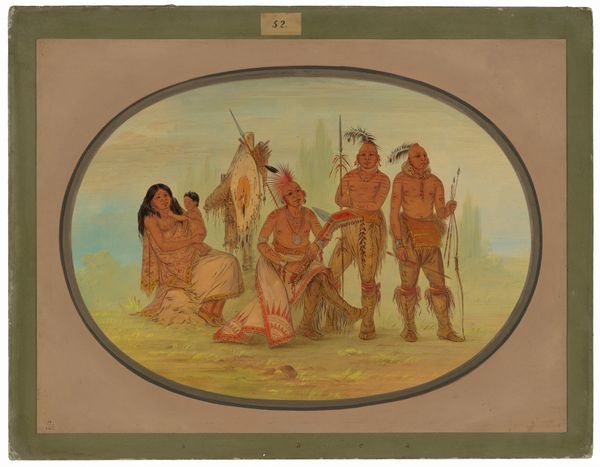
painting
#
portrait
#
water colours
#
narrative-art
#
painting
#
figuration
#
watercolour illustration
#
watercolor
Dimensions: overall: 47.3 x 63.9 cm (18 5/8 x 25 3/16 in.)
Copyright: National Gallery of Art: CC0 1.0
Editor: So, this is "Kickapoo Indians Preaching and Praying" by George Catlin, made sometime between 1861 and 1869, using watercolor. I’m really struck by the figures framed in this sort of oval shape...it gives it the feel of a historical document. What can you tell me about its significance? Curator: Well, the very title presents a layered narrative. Catlin’s work occupies a complex space within art history. He presented himself as a recorder of Indigenous life, yet he was also participating in the romanticizing and, ultimately, the objectification of Native American cultures. Editor: How so? Curator: Consider the period in which it was created. Manifest Destiny was a driving force, and there was intense pressure on Indigenous peoples to assimilate or be displaced. Paintings like these were consumed by a public eager to learn about, but also distance themselves from, Native communities. Editor: So, is this work documenting an authentic religious practice, or is it Catlin's interpretation filtered through a colonial lens? Curator: It's both. The 'preaching and praying' likely blends indigenous spiritual practices with introduced Christian elements, reflecting the influence of missionaries. Catlin might have genuinely believed he was preserving a disappearing way of life, but he was simultaneously reinforcing existing power dynamics through his choice of subject and his role as the recorder. Think about who had access to these images and how they would be used. Editor: It's unsettling to think about how images like this were used to justify the forced assimilation and displacement of the very people they depict. Thank you. It definitely highlights how art is inseparable from its historical context. Curator: Indeed. Looking closely at these works compels us to confront the complex legacy of colonialism and its impact on Indigenous communities. I’m glad you see it too.
Comments
No comments
Be the first to comment and join the conversation on the ultimate creative platform.

